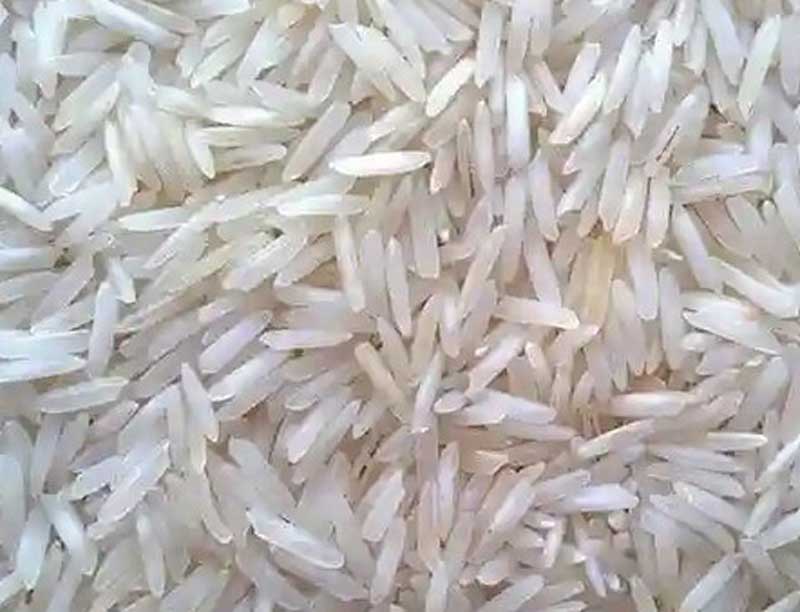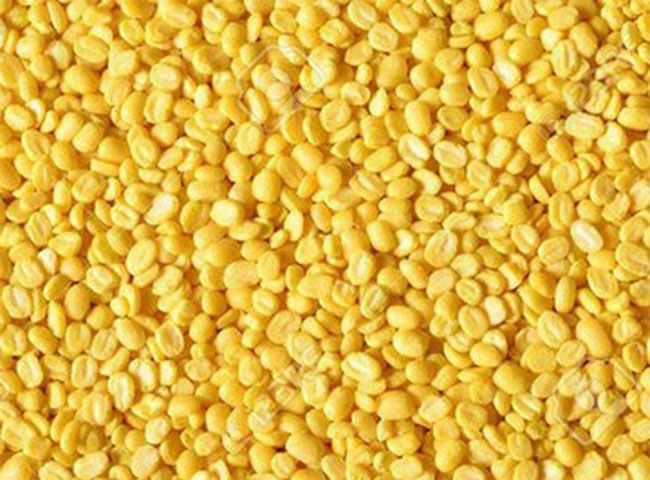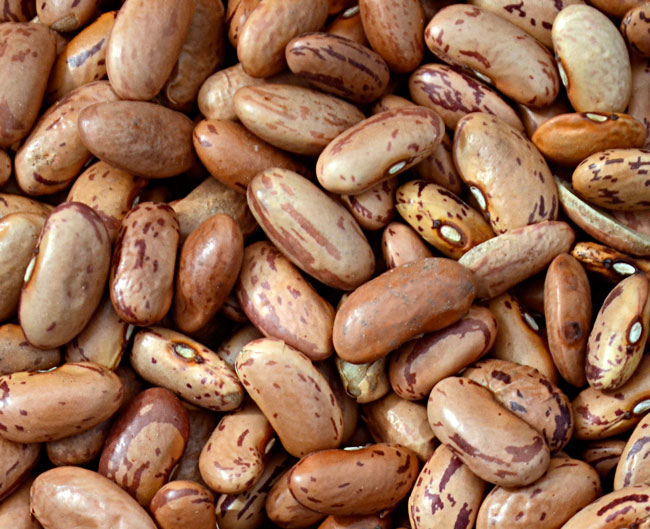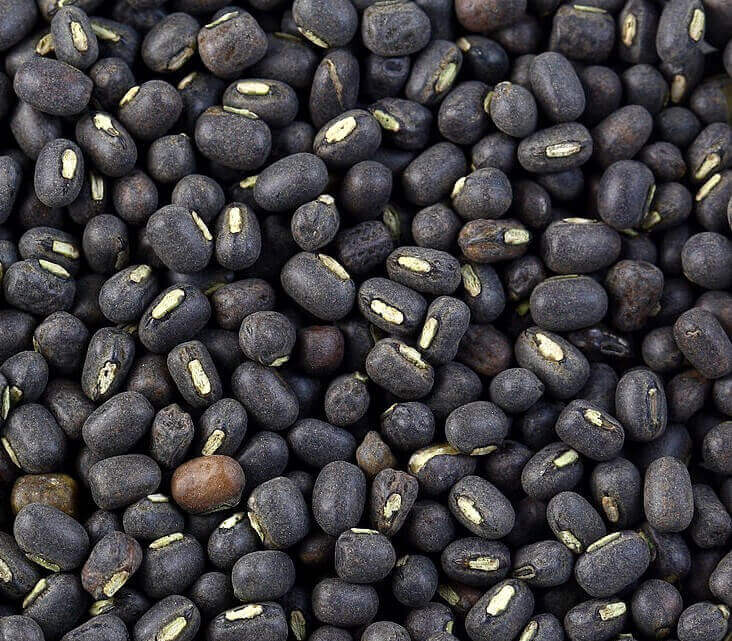Rice is such a versatile food staple! It’s a dietary mainstay for billions of people around the world. Not only is it delicious, but it comes in so many varieties: long-grain, short-grain, basmati, jasmine, and so on.
check recipes: Fried Rice | Jeera Rice | Kheer Indian Rice Pudding
It’s also a great source of energy, carbohydrates, and essential nutrients like vitamins and minerals. Plus, it can be prepared in countless ways, whether steamed, fried, boiled, or even turned into desserts. What’s your favorite rice dish?
Rice Chawal: There are numerous types of rice, each with its own unique characteristics, flavors, and culinary uses. Here are some common varieties:
Long-grain rice: This type has slender grains that remain separate and fluffy when cooked. Examples include Basmati and Jasmine rice.
Medium-grain rice: These grains are slightly shorter and plumper than long-grain rice, with a slightly chewy texture when cooked. Arborio rice, often used in risotto, is a popular medium-grain variety.
Short-grain rice: Short-grain rice has rounder, shorter grains that tend to stick together
when cooked, making them ideal for dishes like sushi or rice pudding. Calrose and sushi rice fall into this category.
Brown rice: Brown rice is whole grain rice with the outer bran layer intact, giving it a nuttier flavor
and chewier texture compared to white rice. It’s higher in fiber and nutrients like vitamins and minerals.
White rice: White rice has been milled to remove the bran and germ, resulting in a polished appearance and a softer texture when cooked. It’s a common staple in many cuisines worldwide.
Basmati rice: A fragrant, long-grain rice variety known for its distinct aroma and flavor. It’s popular in Indian, Middle Eastern, and Central Asian cuisines.
Jasmine rice: Another fragrant long-grain rice, Jasmine rice has a subtly sweet aroma and a slightly sticky texture when cooked. It’s commonly used in Thai and Southeast Asian dishes.
Arborio rice: A short-grain rice variety with a high starch content, making it ideal for creamy risottos and rice puddings.
check recipes: Fried Rice | Jeera Rice | Kheer Indian Rice Pudding
Black rice: Also known as forbidden rice, black rice has a deep purple-black color and a slightly nutty flavor. It’s rich in antioxidants and often used in salads, stir-fries, and desserts.
Wild rice: Despite its name, wild rice is not actually rice but rather the seed of a type of aquatic
grass. It has a chewy texture and a nutty flavor, and it’s often used in pilafs and mixed rice dishes.
Rice Chawal : These are just a few examples, but there are many more varieties of rice cultivated
and enjoyed worldwide, each with its own unique characteristics and culinary applications.
Rice Chawal : Rice is one of the most versatile food staples globally and is used in various ways
in cuisines around the world. Here are some common uses of rice:
Main dishes: Rice often serves as the main component of many dishes, such as stir-fries, curries,
pilafs, biryanis, paellas, and risottos. It can be paired with vegetables, meats, seafood, tofu,
or legumes to create hearty and flavorful meals.
Side dishes: Rice frequently accompanies main courses as a side dish. You can serve it plain, season it with herbs and spices, or cook it with broth to enhance its flavor. I In cuisines like Japanese and Korean, rice forms a staple side dish served with nearly every meal.
Sushi: Sushi rice, seasoned with vinegar, sugar, and salt, forms the base of various sushi dishes. Also used to make sushi rolls (maki), nigiri, and chirashi bowls, providing a sticky texture that holds the ingredients together.
check recipes: Fried Rice | Jeera Rice | Kheer Indian Rice Pudding
Desserts: You can also use rice in sweet dishes as well. Rice pudding, made by simmering rice
in milk or coconut milk with sugar and spices, is a popular dessert in many cultures. Moreover, rice flour finds frequent application in crafting rice cakes, mochi, and various other delectable sweet indulgences.
Thickening agent: Rice flour and rice starch are often used as thickeners in soups, sauces, and puddings due to their ability to create a smooth texture without altering the flavor significantly.
Beverages: Rice can also be used to make beverages such as rice milk, a dairy-free alternative
to cow’s milk, and various rice-based alcoholic drinks like sake, rice wine, and rice beer.
Rice bran oil: Rice bran oil, extracted from the outer layer of rice grains, finds widespread use in cooking and frying owing to its high smoke point and subtle flavor profile. Best for its health benefits, including its high levels of antioxidants and vitamin E.
Rice-based products: Also used to make a variety of processed foods, including rice cakes, rice noodles, rice crackers, and rice cereal. These products provide convenient and gluten-free options for snacking and meal preparation.
Overall, rice is an incredibly versatile ingredient that can be used in a wide range of savory and sweet dishes, making it a fundamental component of many cuisines worldwide.
Rice Chawal चावल
Rice Chawal: चावल एक ऐसा बहुमुखी भोजन है! यह दुनिया भर के अरबों लोगों के लिए आहार का मुख्य आधार है। यह न केवल स्वादिष्ट है, बल्कि इसकी कई किस्में हैं: लंबे दाने वाली, छोटी दाने वाली, बासमती, चमेली, इत्यादि। यह ऊर्जा, कार्बोहाइड्रेट और विटामिन और खनिज जैसे आवश्यक पोषक तत्वों का भी एक बड़ा स्रोत है। इसके अलावा, इसे अनगिनत तरीकों से तैयार किया जा सकता है, चाहे भाप में पकाया जाए, तला जाए, उबाला जाए या यहां तक कि मिठाई में भी बदला जाए। आपका पसंदीदा चावल का व्यंजन कौन सा है?
Rice Chawal: चावल के कई प्रकार हैं, प्रत्येक की अपनी अनूठी विशेषताएं, स्वाद और पाक उपयोग हैं। यहां कुछ सामान्य किस्में दी गई हैं:
लंबे दाने वाले चावल: इस प्रकार के चावल में पतले दाने होते हैं जो पकने पर अलग और फूले हुए रहते हैं। उदाहरणों में बासमती और चमेली चावल शामिल हैं।
मध्यम दाने वाले चावल: ये दाने लंबे दाने वाले चावल की तुलना में थोड़े छोटे और मोटे होते हैं, पकाए जाने पर थोड़े चबाने योग्य बनावट वाले होते हैं। आर्बोरियो चावल, जिसे अक्सर रिसोट्टो में उपयोग किया जाता है, एक लोकप्रिय मध्यम अनाज वाली किस्म है।
छोटे दाने वाले चावल: छोटे दाने वाले चावल में गोल, छोटे दाने होते हैं जो पकने पर आपस में चिपक जाते हैं, जो उन्हें सुशी या चावल का हलवा जैसे व्यंजनों के लिए आदर्श बनाते हैं। कैलरोज़ और सुशी चावल इस श्रेणी में आते हैं।
check recipes: Fried Rice | Jeera Rice | Kheer Indian Rice Pudding
ब्राउन चावल: ब्राउन चावल साबुत अनाज वाला चावल है जिसकी बाहरी चोकर परत बरकरार रहती है, जो इसे सफेद चावल की तुलना में अधिक पौष्टिक स्वाद और चबाने योग्य बनावट देती है। इसमें फाइबर और विटामिन और खनिज जैसे पोषक तत्व अधिक होते हैं।
सफेद चावल: चोकर और रोगाणु को हटाने के लिए सफेद चावल को पीसा गया है, जिसके परिणामस्वरूप पकाए जाने पर एक पॉलिश उपस्थिति और नरम बनावट मिलती है। यह दुनिया भर के कई व्यंजनों में आम बात है।
बासमती चावल: एक सुगंधित, लंबे दाने वाली चावल की किस्म जो अपनी विशिष्ट सुगंध और स्वाद के लिए जानी जाती है। यह भारतीय, मध्य पूर्वी और मध्य एशियाई व्यंजनों में लोकप्रिय है।
चमेली चावल: एक और सुगंधित लंबे दाने वाला चावल, चमेली चावल में पकने पर हल्की मीठी सुगंध और थोड़ी चिपचिपी बनावट होती है। इसका उपयोग आमतौर पर थाई और दक्षिण पूर्व एशियाई व्यंजनों में किया जाता है।
आर्बोरियो चावल: उच्च स्टार्च सामग्री के साथ छोटे अनाज वाली चावल की किस्म, जो इसे मलाईदार रिसोटोस और चावल के हलवे के लिए आदर्श बनाती है।
काला चावल: निषिद्ध चावल के रूप में भी जाना जाता है, काले चावल में गहरा बैंगनी-काला रंग और थोड़ा अखरोट जैसा स्वाद होता है। यह एंटीऑक्सीडेंट से भरपूर है और अक्सर सलाद, फ्राइज़ और डेसर्ट में उपयोग किया जाता है।
जंगली चावल: अपने नाम के बावजूद, जंगली चावल वास्तव में चावल नहीं है, बल्कि एक प्रकार की जलीय घास का बीज है। इसकी बनावट चबाने जैसी और अखरोट जैसा स्वाद है, और इसका उपयोग अक्सर पुलाव और मिश्रित चावल के व्यंजनों में किया जाता है।
Rice Chawal: ये केवल कुछ उदाहरण हैं, लेकिन दुनिया भर में चावल की कई और किस्में उगाई और पसंद की जाती हैं, जिनमें से प्रत्येक की अपनी अनूठी विशेषताएं और पाक अनुप्रयोग हैं।
check recipes: Fried Rice | Jeera Rice | Kheer Indian Rice Pudding
Rice Chawal: चावल विश्व स्तर पर सबसे बहुमुखी खाद्य पदार्थों में से एक है और दुनिया भर के व्यंजनों में विभिन्न तरीकों से इसका उपयोग किया जाता है। यहाँ चावल के कुछ सामान्य उपयोग दिए गए हैं
Rice Chawal: चावल विश्व स्तर पर सबसे बहुमुखी खाद्य पदार्थों में से एक है और दुनिया भर के व्यंजनों में विभिन्न तरीकों से इसका उपयोग किया जाता है। यहाँ चावल के कुछ सामान्य उपयोग दिए गए हैं:
मुख्य व्यंजन: चावल अक्सर कई व्यंजनों के मुख्य घटक के रूप में कार्य करता है, जैसे कि स्टर-फ्राई, करी,
पिलाफ, बिरयानी, पेला और रिसोट्टो। हार्दिक और स्वादिष्ट भोजन बनाने के लिए इसे सब्जियों, मांस, समुद्री भोजन,
टोफू या फलियों के साथ जोड़ा जा सकता है।
साइड डिश: चावल अक्सर मुख्य व्यंजन के साथ साइड डिश के रूप में आता है। इसे सादा परोसा जा सकता है,
जड़ी-बूटियों और मसालों के साथ पकाया जा सकता है, या अतिरिक्त स्वाद के लिए शोरबा के साथ पकाया जा सकता है।
जापानी और कोरियाई जैसे कुछ व्यंजनों में, चावल लगभग हर भोजन के साथ परोसा जाने वाला एक प्रमुख व्यंजन है।
सुशी: सुशी चावल, सिरका, चीनी और नमक के साथ पकाया जाता है, जो विभिन्न सुशी व्यंजनों का आधार बनता है।
इसका उपयोग सुशी रोल (माकी), निगिरी और चिराशी कटोरे बनाने के लिए किया जाता है, जो एक चिपचिपी बनावट
प्रदान करता है जो सामग्री को एक साथ रखता है।
मिठाइयाँ: चावल का उपयोग मीठे व्यंजनों में भी किया जा सकता है। चावल का हलवा, जो चावल को दूध या
नारियल के दूध में चीनी और मसालों के साथ उबालकर बनाया जाता है, कई संस्कृतियों में एक लोकप्रिय मिठाई है।
इसके अतिरिक्त, चावल के आटे का उपयोग आमतौर पर चावल केक, मोची और अन्य मीठे व्यंजन बनाने के लिए किया जाता है।
check recipes: Fried Rice | Jeera Rice | Kheer Indian Rice Pudding
गाढ़ा करने वाला एजेंट: चावल के आटे और चावल के स्टार्च का उपयोग अक्सर सूप, सॉस और पुडिंग में गाढ़ा
करने वाले एजेंट के रूप में किया जाता है, क्योंकि वे स्वाद में महत्वपूर्ण बदलाव किए बिना एक चिकनी बनावट
बनाने की क्षमता रखते हैं।
पेय पदार्थ: चावल का उपयोग चावल के दूध जैसे पेय पदार्थ बनाने के लिए भी किया जा सकता है, जो गाय के दूध
का एक डेयरी-मुक्त विकल्प है, और विभिन्न चावल-आधारित मादक पेय जैसे कि, चावल की शराब और चावल की बीयर।
चावल की भूसी का तेल: चावल के दानों की बाहरी परत से निकाला गया, चावल की भूसी का तेल अपने
उच्च धूम्रपान बिंदु और हल्के स्वाद के कारण खाना पकाने और तलने के लिए उपयोग किया जाता है।
यह अपने स्वास्थ्य लाभों के लिए भी मूल्यवान है, जिसमें इसमें उच्च स्तर के एंटीऑक्सीडेंट और विटामिन ई शामिल हैं।
चावल आधारित उत्पाद: चावल का उपयोग विभिन्न प्रकार के प्रसंस्कृत खाद्य पदार्थ बनाने के लिए किया जाता है,
जिसमें चावल केक, चावल नूडल्स, चावल क्रैकर और चावल अनाज शामिल हैं। ये उत्पाद स्नैकिंग और भोजन
तैयार करने के लिए सुविधाजनक और ग्लूटेन-मुक्त विकल्प प्रदान करते हैं।
कुल मिलाकर, चावल एक अविश्वसनीय रूप से बहुमुखी घटक है जिसका उपयोग कई प्रकार के नमकीन
और मीठे व्यंजनों में किया जा सकता है, जिससे यह दुनिया भर के कई व्यंजनों का एक मूलभूत घटक बन जाता है।




